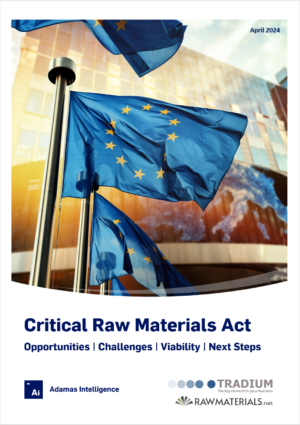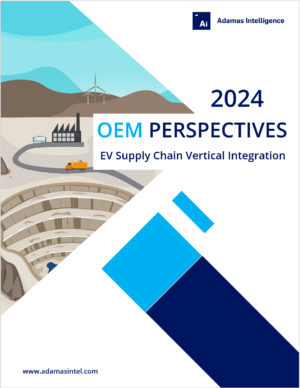As Anchors Cut Free, NdPr Oxide Price Set to Sail Higher

Prices trending lower on weak demand from legacy automotive, worsening consumer confidence crisis
Following a strong Q1 performance, average magnet rare earth oxide prices softened in Q2 and Q3 2022, dragging YTD average prices below our expected levels for the year.
Overall, prices trended lower in Q2 and Q3 on weak demand from legacy automotive applications (due to ongoing microchip shortages), coupled with a worsening consumer confidence crisis in Europe, Asia and North America.
As of 2021, automotive micromotors, sensors and loudspeakers were collectively responsible for nearly 15% of total global NdFeB demand so ongoing poor performance from this segment has a materially negative impact on rare earth demand and prices, as we have seen this year.
Similarly, as of 2021, consumer electronics, powertools and appliances were collectively responsible for around 35% of total global NdFeB demand so it’s no surprise that the current consumer confidence crisis sweeping across major economies is compounding the market’s woes.
Looking forward, we believe the current market malaise will ease in the coming 6 to 18 months, steering prices back inline with our existing projections through the medium- to long-term.
Note: Our latest price forecasts are available to clients via the “Rare Earth Pricing Quarterly Outlook” subscription-based report.
On the Supply Side:
Inducement curve supports a current NdPr oxide price of US $150 per kilogram
With magnet rare earth prices down from the 10-year highs reached earlier this year, it’s easy to lose sight of the base fundamentals underpinning the industry, and their overarching influence on prices in an unimpaired market.
From a cost-curve perspective, Adamas analysis reveals that a present-day incentive price of ~US $150 per kilogram of NdPr oxide is required to justify and induce the breadth of supply-side investments needed to meet medium-and long-term demand growth.
Not surprisingly, NdPr oxide prices started 2022 in the ~US $150 per kilogram range before auto industry bottlenecks and faltering consumer confidence suppressed near-term demand growth.
Looking forward, we believe these anchors will be largely cut free in the coming 6 to 18 months, sending NdPr oxide prices sailing back inline with our existing projections through the medium- to long-term.
China becoming less vertically integrated, increasingly reliant on expensive concentrate imports
While it’s tempting to think about China’s rare earth industry as a super consolidated, monolithic entity – the reality is that most producers and value-adders in the nation are not vertically integrated and, as a whole, China’s industry has become increasingly reliant on foreign sources of expensive feedstock from abroad in recent years.
In 2015, over 90% of all separated light rare earth oxides produced in China were derived from domestically mined feedstock but by 2021, this share was down to nearly 70% as the nation’s reliance on imports expands.
Similarly, in 2015, nearly 85% of all heavy rare earth oxides produced in China were derived from domestically mined feedstock but as of 2021 this share was down to just 53%.
And the price of these feedstock imports is increasing too – increasing disproportionately more than the value of the products they yield, adding forward support for higher oxide, metal and magnet prices downstream.
For example, from January 2021 to August 2022, the unit price of bastnaesite concentrate imported from the U.S. to China increased by 216% overall while the China domestic price of NdPr oxide (the main product from this concentrate) increased just 31% over the same period.
Similarly, from January 2021 to August 2022, China domestic mineral concentrate prices rose by 75% to 100%, and the average price paid for mixed rare earth chemical concentrate imports increased by 100% to 280%, further bolstering support for strong oxide, metal and magnet prices going forward.
On the Demand Side:
Demand is evolving, increasingly dominated by less cost sensitive applications
The nature of global NdFeB magnet demand is rapidly evolving as the market shifts from a past driven by hard disk drives, optical disc drives, consumer electronics, automotive micromotors, sensors and loudspeakers to a future led by electric vehicle traction motors, wind power generators and other energy-efficient motors, pumps and compressors.
In the years ahead, demand will be increasingly led by applications in which the use of NdFeB magnets imparts an economic benefit at the system-level (be it through battery cost savings, maintenance cost reductions or reduced emissions), making the nature of future demand significantly less sensitive to rare earth input prices than that of past and present.
Continued heavy rare earth thrifting will help offset rising NdPr oxide price
Going forward, continued heavy rare earth thrifting via grain boundary diffusion and other novel techniques from the likes of JL MAG, Neo Performance Materials and others will lead to reduced concentrations of expensive (and scarce) heavy rare earths used in NdFeB magnets for motors, generators and other applications.
This reduction in heavy rare earth input costs will translate into considerable savings at the NdFeB magnet level, helping offset and partially negate the expected rise in NdPr oxide price.
Latent demand pop, tight inventory levels a recipe for higher prices
As auto industry bottlenecks ease and consumer confidence recovers in the coming 6 to 18 months, we see potential for a latent demand pop in 2023/24, whereby consumer purchases that are delayed this year materialize in the year(s) to follow.
The rare earth demand market experienced this type of phenomenon in 2021 following the initial year of the COVID-19 pandemic and we expect will experience another such event in the not-too-distant future.
Couple this expected demand pop with the reality that China’s rare earth industry is holding just weeks of NdPr oxide supplies and we see potential for prices to jump back to early-2022 levels in short order, if only temporarily.
Outlook:
Expect US $200 per kilogram NdPr oxide by the end of the decade
Going forward, we expect NdPr oxide prices to trend upward overall through the middle of the decade and thereafter travel sideways through 2029 as battery supply chain bottlenecks constrain global EV production.
By 2030, with bottlenecks eased and demand growth unencumbered, we expect NdPr oxide prices to top US $200 per kilogram in reflection of the supply side’s increasing struggles to keep up and the demand side’s increasing willingness to pay.
History poised to repeat itself
For the better part of the last decade, Adamas projected that NdPr oxide prices would top US $100 per kilogram before 2030 despite conventional wisdom claiming that this price level would induce demand destruction and push end-users (particularly from the automotive industry) to adopt alternatives.
In the context of rising battery materials prices, copper prices and energy prices more broadly, our research indicates that rare earth magnet demand from automotive, wind power and many other high-growth end-use sectors is substantially less elastic to NdPr price than the dated industry rhetoric would suggest.
Surprisingly, the price of NdPr oxide surpassed US $170 per kilogram in Q1 of this year – exceeding even our wildest near-term expectations. Not surprisingly, however, is that in the face of this price rise, over 90% of all EVs produced globally this year continue to use rare earth permanent magnet traction motors because they impart a system-level economic benefit that outweighs the experienced rise in rare earth input costs.
Will we see NdPr oxide prices do a “lithium” anytime soon? Likely not, but we are confident that US $200 per kilogram is closer than many might expect.
More Information: Rare Earth Magnet Market Outlook to 2035
In this report, we provide a detailed overview of the global NdFeB alloy, powder, magnet and magnet rare earth oxide markets, including a breakdown of historical production, consumption and prices from 2015 through 2021. Next, we unravel the anticipated near-term impacts of the pandemic recovery on world markets and forecast global supply, demand and prices from 2022 through 2035.






